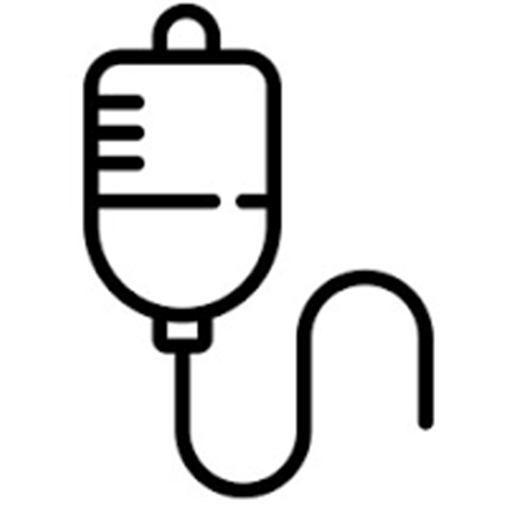Nursing Procedures
Nursing procedures encompass a wide range of actions and techniques performed by nurses to provide optimal care for patients. These procedures are designed to address physical, emotional, and psychological needs while promoting healing, safety, and comfort.

Ryle’s Tube Insertion
Ryle's tube insertion is a medical procedure involving the placement of a thin, flexible tube through the nose, down the esophagus, and into the stomach. This tube, commonly referred to as a nasogastric tube, is used for various purposes, such as feeding, administering medications, or draining gastric contents. The procedure is typically performed in patients who cannot swallow food or liquids due to conditions like neurological disorders, injuries, or post-surgical recovery. It is also used for diagnostic purposes, such as sampling gastric contents for laboratory analysis.The insertion process requires careful technique to minimize discomfort and avoid complications.
TIME TO GET STARTED
Nutritional Support Recovery
Home doctors often assist patients recovering from Ryle’s tube insertion by providing tailored nutritional plans. They ensure that liquid diets and supplements are properly administered through the tube, promoting optimal recovery.

Foley’s Catheter Insertion
Foley’s catheter insertion is a medical procedure used to drain urine from the bladder. It involves placing a flexible, sterile tube called a Foley catheter through the urethra into the bladder. This type of catheter is commonly used for patients who are unable to urinate naturally due to medical conditions, surgeries, or injuries. The procedure is often performed by healthcare professionals in a hospital or clinical setting.

Wound Dressing and Suture Removal
Wound dressing and suture removal are crucial aspects of post-operative and wound care management. Proper wound dressing helps protect the wound from infection, promotes healing, and keeps it clean and moist, which is essential for optimal recovery. Dressing materials can vary depending on the type and severity of the wound, including gauze, adhesive bandages, hydrocolloid dressings, or antimicrobial coverings.

IV Fluid Management
Intravenous (IV) fluid management is a critical aspect of patient care in medical settings, aimed at maintaining or restoring the body's fluid and electrolyte balance. This process involves administering fluids directly into the bloodstream through a vein, providing immediate and controlled hydration, electrolyte replenishment, or medication delivery. IV fluids are typically categorized into crystalloids, such as saline and lactated Ringer's, and colloids, such as albumin or dextran, depending on their composition and purpose.

Drug Administration
Drug administration refers to the method by which medications are delivered to a patient to achieve a therapeutic effect. The choice of administration route is determined by factors such as the type of drug, the desired effect, the urgency of treatment, and the patient's condition. Common methods include oral, intravenous, intramuscular, subcutaneous, topical, and inhalation routes. Oral administration is the most common and convenient method, involving the intake of drugs through the mouth.

Foley’s Catheter Insertion
Foley’s catheter insertion is a medical procedure used to drain urine from the bladder. It involves placing a flexible, sterile tube called a Foley catheter through the urethra into the bladder. This type of catheter is commonly used for patients who are unable to urinate naturally due to medical conditions, surgeries, or injuries. The procedure is often performed by healthcare professionals in a hospital or clinical setting.

Wound Dressing and Suture Removal
Wound dressing and suture removal are crucial aspects of post-operative and wound care management. Proper wound dressing helps protect the wound from infection, promotes healing, and keeps it clean and moist, which is essential for optimal recovery. Dressing materials can vary depending on the type and severity of the wound, including gauze, adhesive bandages, hydrocolloid dressings, or antimicrobial coverings.

IV Fluid Management
Intravenous (IV) fluid management is a critical aspect of patient care in medical settings, aimed at maintaining or restoring the body's fluid and electrolyte balance. This process involves administering fluids directly into the bloodstream through a vein, providing immediate and controlled hydration, electrolyte replenishment, or medication delivery. IV fluids are typically categorized into crystalloids, such as saline and lactated Ringer's, and colloids, such as albumin or dextran, depending on their composition and purpose.

Drug Administration
Drug administration refers to the method by which medications are delivered to a patient to achieve a therapeutic effect. The choice of administration route is determined by factors such as the type of drug, the desired effect, the urgency of treatment, and the patient's condition. Common methods include oral, intravenous, intramuscular, subcutaneous, topical, and inhalation routes. Oral administration is the most common and convenient method, involving the intake of drugs through the mouth.
Guiding your journey to health and a better life
We at Wegomeds revolutionize healthcare with our innovative hybrid approach, reaching remote and medically underserved locations. Our network of world-class Top Notch Health Care Providers powered by an intelligent tech platform and operated by trained and certified health workers delivers quality healthcare services in an assisted mode. Our mission goes beyond more connectivity making quality & reliable healthcare accessible and affordable to all.
TIME TO GET STARTED
